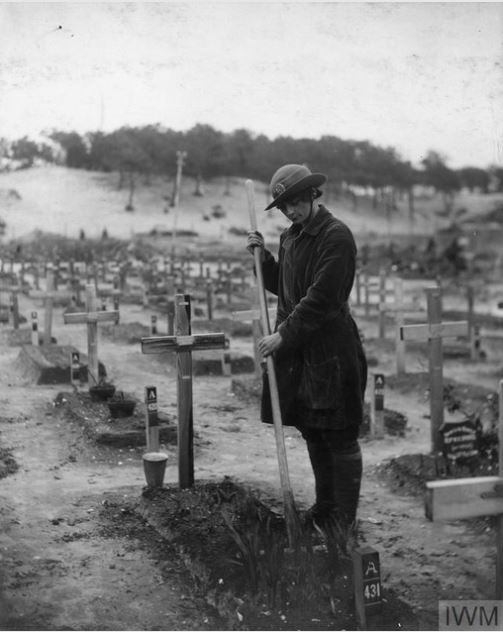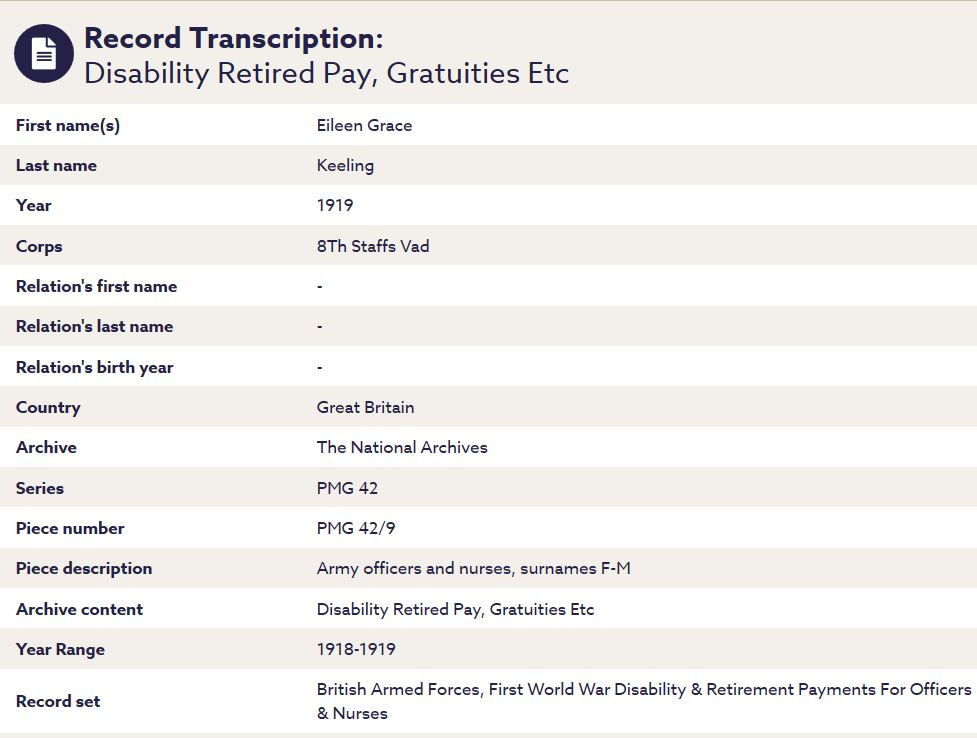World War 1 Women's Army and Nursing Collections released on FindMyPast
- Therese Lynch
- Mar 7, 2020
- 4 min read
Was your ancestor among the 57,000 women who served in Britain's Women's Army Auxiliary Corps (WAAC) during World War 1 (WW1)? Or perhaps she was among the 15,000 women who served in Queen Alexandra’s Imperial Military Nursing Service, the Queen Alexandra’s Imperial Military Nursing Service (Reserve) or the Territorial Force Nursing Service during WW1?

Above: a recruiting poster for the Women's Army Auxiliary corps circa 1917
Find My Past ($) (an affiliate) has released two valuable record collections for them, namely:
British Army, Women's Army Auxiliary Corps 1917-1920; and
British Armed Forces, First World War Disability & Retirement Payments For Officers & Nurses.
It is a timely release which coincides with International Women's Day on 8 March.
Although FindMyPast is a subscription site, it is free to search and pay to view. If you find the information you need through a search, it is possible to pay for a single month's subscription.
Click here to search the WAAC records.
Click here to search Queen Alexandra's Nursing Services and the Territorial Nursing Service's records in FindMyPast's British Armed Forces, First World War Disability & Retirement Payments For Officers & Nurses collection.
Women's Army Auxiliary Corps 1917-1920
The Women's Army Auxiliary Corps (WAAC) was a branch of the British military during and immediately after the First World War. It was established in February 1917 and renamed the Queen Mary's Army Auxiliary Corps (QMAAC) on 9 April 1918.
The WAAC/QMAAC was relatively short-lived and was disbanded on 27 September 1921. Nevertheless, women came into their own during World War 1 when their labour was required to release men to fight on the front lines. And this was the message the British Government used when attracting women to join the WAAC.

Above: A group of Women's Army Auxiliary Corps personnel training in 1917. Photo courtesy of the Imperial War Museum. (c)
The WAAC's formation was largely due to a War Office investigation which showed that a large number of non-combatant tasks were being performed by soldiers in France. It was clear that women could do many of these jobs, potentially freeing up 12,000 men for service in the front line.
Members of the WAAC had to be willing to serve in any capacity either at home or abroad and the overseas postings in France were particularly coveted despite their inherent danger. The first party of 14 women arrived on the Western Front on 31 March 1917. Eventually, 9,000 women served with the WAAC in France of whom eight were killed and 75 were wounded in their service of King and country.
WAAC members served in many roles including but not restricted to cooks, waitresses, clerks, drivers, mechanics, telephonists, telegraphers, typists, stenographers and gardeners. (Gardeners on the western front tended British war graves. Grave digging was done by the men while the WAACs filled in and tidied the graves.)
What is in the records?
The Collection contains material from the UK National Archives War Office Series 162 and 398. Sadly, like other WW1 service records, many were destroyed by fire, water and mould damage following a German air raid over London in September 1940. This collection therefore represents only a percentage of the original WAAC service records.
Some records include multi-page images while others are only a transcript. I found records for 49 women born in Australia and all had their service record images attached.

Above: A WAAC member tending British war graves in France.
(c) Imperial War Museum.
The transcripts include some or all of the following:
Name
Age
Birth date
Year
Service number
Regiment
Parish
County
Country.
However, much more information is to be found in the images which normally contain the whole service record showing, among other things, their application, role, suitability for overseas deployment, physical description, where they served, next of kin, education, etc. etc. etc.
Records without an image attached often contain a direct link from the transcript to the corresponding images at the UK National Archives where they can be downloaded for £3.50.

Above: Members of the WAAC in the clothing store of a British ordnance depot. (c) Imperial War Museum
British Armed Forces, First World War Disability & Retirement Payments For Officers & Nurses
This collection also comes from the UK National Archives. Queen Alexandra's nurses served in both the British Army and Royal Navy. The Territorial Nursing Service was established in 1908 and was part of the British Army.
What is in the records?
You will find details for payments of temporary retired pay and gratuities awarded to nurses in respect of the disabilities for which they were invalided. (Note: The collection also holds the same information for invalided officers of the three Services.) See below for an example:

Conclusion
Our female ancestors often left a negligible footprint in official records. This collection therefore provides an excellent insight into those family members who stepped up in time of war and the records provide an insight into their lives seldom found elsewhere.
How did you go?
Unfortunately the records I was looking for myself in these two collections must have been destroyed during the air raid in the 1940s. But how did you go? If you found one or more of your family in the records, please share your good fortune below in the Comments section.
If you didn't find any family members in the WAAC or WW1 nurses, perhaps they were part of that group of 90,000 selfless people who served with the British Red Cross as volunteers. Follow this link to my Blog post on this topic previously. The Red Cross database is one of my favourite WW1 collections.
Until next time, happy ancestor hunting.
Therese
Your Family Genealogist
Pictures: Courtesy of FindMyPast and the Imperial War Museum























Comments